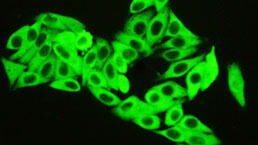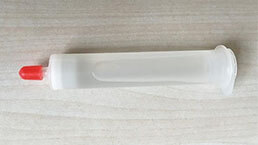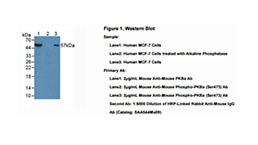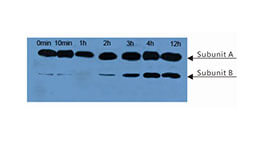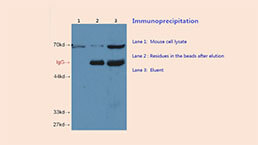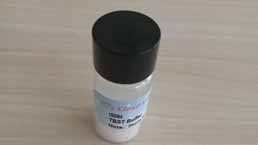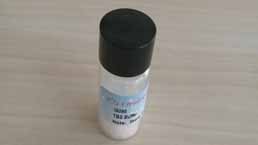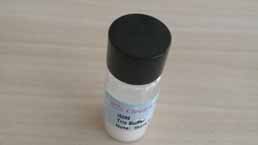Polyclonal Antibody to Complement 1q (C1q)
C1-q; Autoantigen Clq
- Product No.PAA747Hu01
- Organism SpeciesHomo sapiens (Human) Same name, Different species.
- SourcePolyclonal antibody preparation
- HostRabbit
- Potencyn/a
- Ig Type IgG
- PurificationAntigen-specific affinity chromatography followed by Protein A affinity chromatography
- LabelNone
- Immunogen n/a
- Buffer Formulation0.01M PBS, pH7.4, containing 0.05% Proclin-300, 50% glycerol.
- TraitsLiquid
- Concentration0.5mg/mL
- Organism Species Moren/a
- ApplicationsIHC
If the antibody is used in flow cytometry, please check FCM antibodies. - DownloadInstruction Manual
- UOM 20µl100µl 200µl 1ml 10ml
- FOB
US$ 107
US$ 251
US$ 358
US$ 895
US$ 3580
For more details, please contact local distributors!
SPECIFITY
The antibody is a rabbit polyclonal antibody raised against C1q. It has been selected for its ability to recognize C1q in immunohistochemical staining and western blotting.
USAGE
Western blotting: 0.01-2µg/mL;
Immunohistochemistry: 5-20µg/mL;
Immunocytochemistry: 5-20µg/mL;
Optimal working dilutions must be determined by end user.
STORAGE
Store at 4°C for frequent use. Stored at -20°C in a manual defrost freezer for two year without detectable loss of activity. Avoid repeated freeze-thaw cycles.
STABILITY
The thermal stability is described by the loss rate. The loss rate was determined by accelerated thermal degradation test, that is, incubate the protein at 37°C for 48h, and no obvious degradation and precipitation were observed. The loss rate is less than 5% within the expiration date under appropriate storage condition.
GIVEAWAYS
INCREMENT SERVICES
| Magazine | Citations |
| Journal of Clinical Immunology | Complement activation contributes to the injury and outcome of kidney in human anti-glomerular basement membrane disease. PubMed: 22941511 |
| Fish and Shellfish Immunology | Characterization of complement 1q binding protein of tiger shrimp, Penaeus monodon, and its C1q binding activity Pubmed: 23085472 |
| Journal of Neuroimmunology | Acute and prolonged complement activation in the central nervous system during herpes simplex encephalitis Pubmed:27235358 |
| Archives of Gynecology and Obstetrics | The role of complement components C1q, MBL and C1 inhibitor in pathogenesis of endometriosis Pubmed:29572748 |
| Journal of NeuroVirology | Intrathecal complement activation by the classical pathway in tick-borne encephalitis Pubmed: 30850976 |
| PLoS One | Complement activation profile of patients with primary focal segmental glomerulosclerosis Pubmed: 32569286 |
| CELL | Liver Immune Profiling Reveals Pathogenesis and Therapeutics for Biliary Atresia 33248023 |
| Chinese Journal of Nephrology, Dialysis & Transplantation | Plasma and urine complement activation products in light chain and heavy chain deposition disease |
| Journal of Chemical Neuroanatomy | Matrine treatment induced an A2 astrocyte phenotype and protected the blood-brain barrier in CNS autoimmunity 34280490 |
| Neuropsychiatr Dis Treat | Elevated Serum Complement C1q Levels After Traumatic Brain Injury and Its Association with Poor Prognosis Pubmed:35035218 |
| Catalog No. | Related products for research use of Homo sapiens (Human) Organism species | Applications (RESEARCH USE ONLY!) |
| PAA747Hu01 | Polyclonal Antibody to Complement 1q (C1q) | IHC |
| LAA747Hu71 | Biotin-Linked Polyclonal Antibody to Complement 1q (C1q) | IHC |
| SEA747Hu | ELISA Kit for Complement 1q (C1q) | Enzyme-linked immunosorbent assay for Antigen Detection. |
| AEA747Hu | ELISA Kit for Anti-Complement 1q Antibody (Anti-C1q) | Enzyme-linked immunosorbent assay for Antibody Detection. |
| LMA747Hu | Multiplex Assay Kit for Complement 1q (C1q) ,etc. by FLIA (Flow Luminescence Immunoassay) | FLIA Kit for Antigen Detection. |
| KSA747Hu01 | ELISA Kit DIY Materials for Complement 1q (C1q) | Main materials for "Do It (ELISA Kit) Yourself". |







